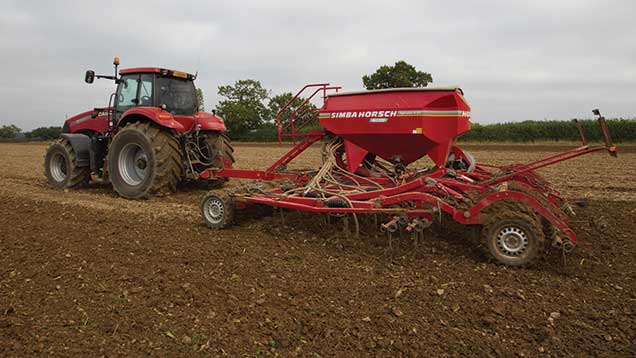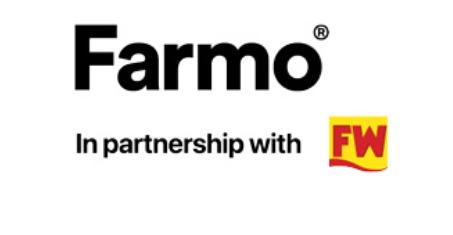Tips on how to grow top-yielding wheat Reflection
 © Tim Scrivener
© Tim Scrivener The highest yielding variety on the current Recommended List offers growers an extra 3% yield over the Group 4s as a first wheat, adding to their variety mix this autumn.
But unlike recent chart toppers, Reflection is an early maturing type that doesn’t rely on having a longer grain fill period to build high yields.
Its early maturing nature means it may require a different approach for those growing it for the first time this autumn, reaching key growth stages up to a week earlier.
One grower who saw success with the variety last year was John Grimsey, who farms 303ha with son Philip near Orford, Suffolk. Together with their agronomist, Robert Hurren of Apex agronomy, they achieved 12.6t/ha.
“It outyielded all other varieties last year, including Beluga, relay and Kielder,” says Mr Grimsey.
Drilling and establishment
This year’s crop was drilled on 3 October, the ideal date for their farm, and he recalls conditions were good, with a good seed-bed.
Mr Hurren adds that its short straw and good stem strength means you can drill earlier than this.
“It gives you peace of mind as you can drill relatively early, for example in mid September, without the lodging risk if you get strong growth,” explains Mr Hurren.
Syngenta advice
- Optimum drilling date: Mid September to mid October
- Latest safe drilling: Mid February
- Soils: Performs well in both light and heavy soils
“Although,” he adds, “I don’t encourage early drilling in bad blackgrass areas.”
One blackgrass benefit is its strong tillering, which makes it very competitive against the grassweed.
Its strong tillering was also taken into consideration in drilling rates, with the Grimsey’s crop drilled at 135kg/ha. “The aim is to achieve around 250-300 plants/sq m in the spring.
Growth regulation and fertiliser
Reflection’s stiff straw also means growers don’t need such heavy reliance on growth regulation. However, it received a reasonably robust growth regulator programme to ensure it remained standing on the fertile marsh at Raydon Hall.
“We opted for a Moddus (trinexapac-ethyl)/chlormequat split at T0 and T1 plus we also added half-rate Terpal (ethephon + mepiquat). On less fertile soils, you would not necessarily need Terpal.”
Fertiliser wise, its good straw strength means you can push for yield without the lodging risk within the N-max limit.
Mr Hurren advises holding back more for the final application at flag leaf emergence. “This late nitrogen is stored in the stem ready to feed the grain during grainfill without the crop having to redistribute N reserves from the leaves. This maintains the ‘greeness’ of leaf canopy for longer, enabling the crop to photosynthesise for a few extra days before the start of senescence, thus increasing yield.”
For a first wheat typically receiving a total of 260kg/ha of nitrogen, apply about 80-100kg/ha of this at the flag leaf stage to feed grain.
Disease programme
It has a sound disease profile, but it still needs looking after with a robust programme. “Being early it would be one of the first varieties to be sprayed at the crucial T1 and T2 timings helping to spread the workload when grown in mix with some later developing varieties,” says Mr Hurren.
Syngenta technical crop expert Kathryn Hearn points to its untreated yield of 94%. “This suggests it will perform in a high disease pressure year.”
But Mr Hurren adds that septoria is its main weakness with a resistance score of 5, so doesn’t advise cutting back on fungicides. It is strong on rusts, particularly brown with a score of 9 so there may be some savings there.
The early septoria pressure this year meant Mr Grimsey opted for an SDHI at both T1 and T2 and crops are currently looking clean. “We added Tracker (boscalid + epoxiconazole) for eyespot control, but no mildewicide as there was little risk,” says Mr Hurren.
Ms Hearn says at T0, it may be worth going with an azole strong on yellow rust. “Our trials showed some yellow rust in seedlings and it is maybe worth considering in a high pressure year.”
For the T3, the plan is to go with prothioconazole, tebconazole plus chlorothalonil. “The chlorothalonil is included in the mix to help maintain the septoria protection in addition to the azoles which will also give good fusarium protection during flowering.”
Harvest
It has a good hagberg of 228 and 77.4kg/hl specific weight which puts it on a par with JB Diego at 77.7kg/hl.
Having an early maturing variety in your varietal mix also helps spread harvest, as well as the spraying workload, by reaching growth stages slightly earlier (see box).
Mr Hurren says this could be useful for early entry into oilseed rape crop.
“I will be advising my clients to try Reflection this autumn, as part of their main four or five varieties. I can see real value, particularly as most of my clients are on heavy soil, offering good straw strength and high yield.
“I see it mainly as first wheat, but it may also have a role in the second position and I am keen to see how Mr Grimsey’s crop performs this season.”
Input programme for 2014-2015 second wheat at Raydon Hall
Fungicide
T0 – Chlorothalonil + Centaur
T1 – Adexar (epoxiconazole + fluxapyroxad) plus Tracker (boscalid + epoxiconazole) and chlorothalonil
T2 – Adexar and chlorothalonil
T3 – Proline (prothioconazole), tebconazole and chlorothalonil
Growth characteristics
Early maturity and an erect growth habit after stem extension are two key agronomic features of Refection.
One noticeable difference with other high yielding Group 4s is the size of the ears.
“Unlike others with larger ears like JB Diego, it has smaller ears,” says Syngenta technical crop expert Kathryn Hearn. “But the strong tillering means there are more of them and this is how it builds high yields.”
Growth stages
Syngenta trials found that it was five to seven days earlier than Santiago in the field, which helped spread harvest and was also earlier at other growth stages.
The flag leaf appeared a day earlier than Santiago last season, says Ms Hearn, with heading up to five days earlier, so care is needed with fungicide timings.
Additional benefits include orange blossom midge and wheat soil-borne mosaic virus. There is plenty of seed available this autumn and Syngenta believes it will take 8-10% market share this coming season.

